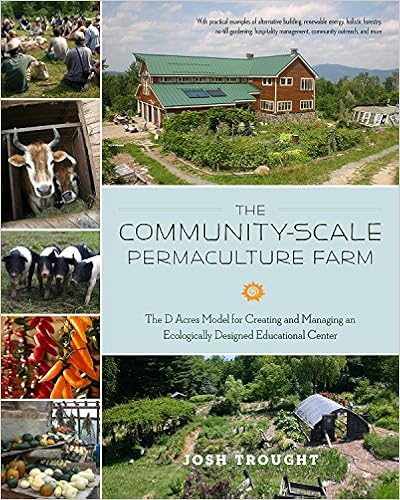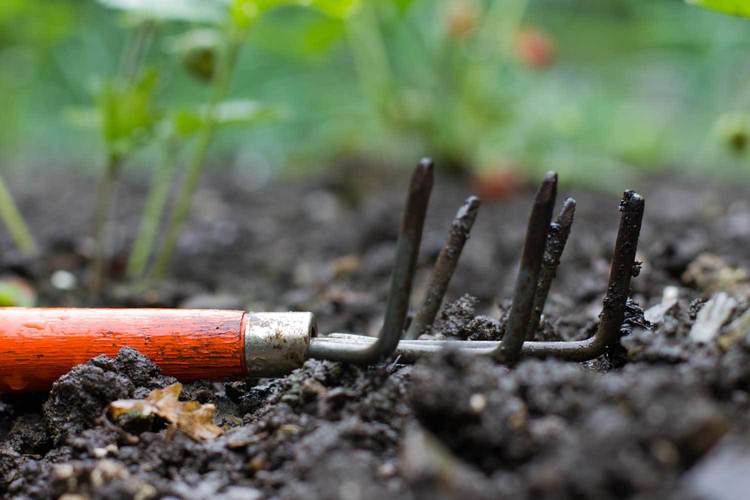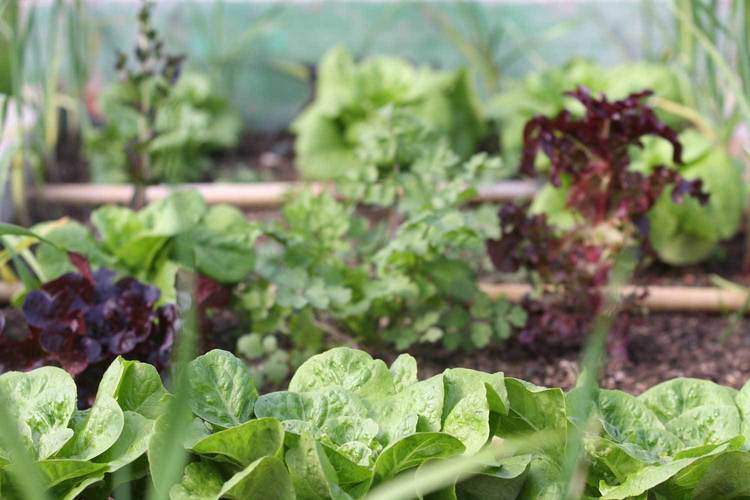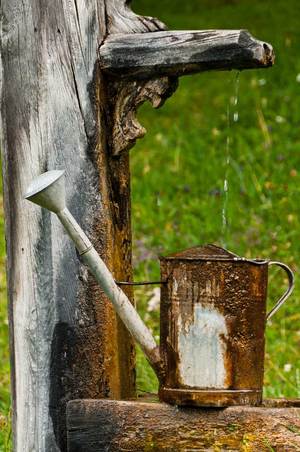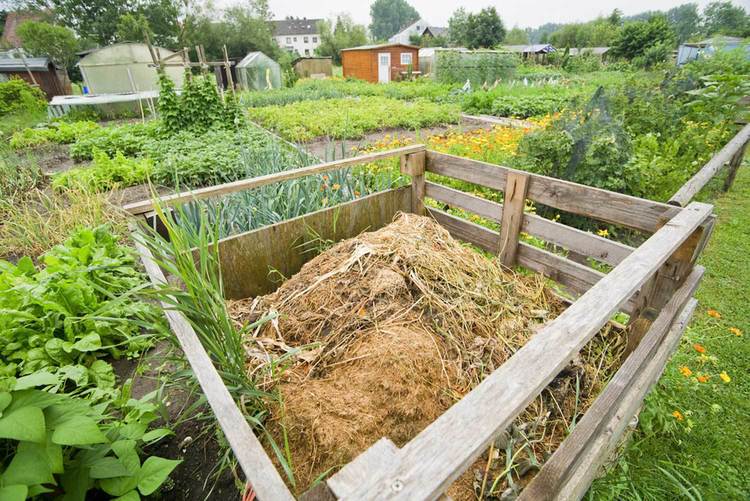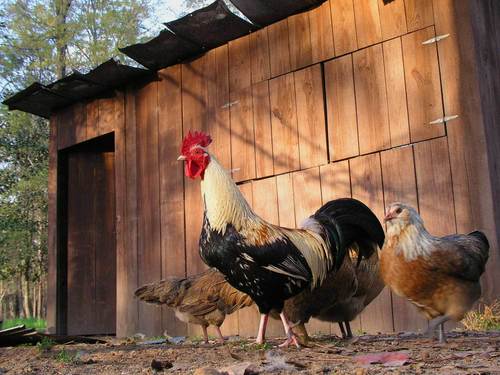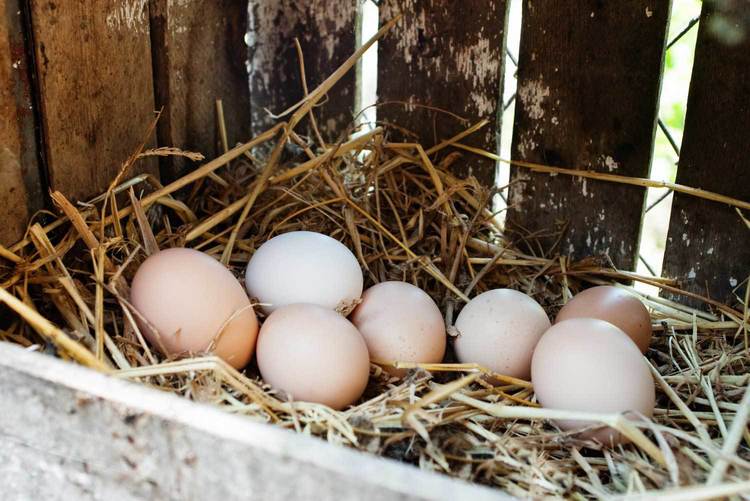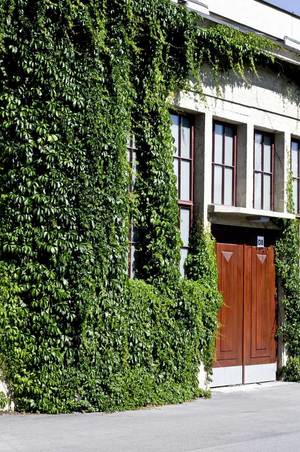The Community-Scale Permaculture Farm: The D Acres Model for Creating and Managing an Ecologically Designed Educational Center:
Josh Trought: 8601423607887: Amazon.com: Books
With practical examples of alternative building, renewable energy, holistic forestry, no-till gardening, hospitality management, community outreach, and more
The Community-Scale Permaculture Farm describes not only the history of the D Acres project, but its evolving principles and practices that are rooted in the land, its inhabitants, and the joy inherent in collective empowerment.
For almost twenty years, D Acres of New Hampshire has challenged and expanded the common definition of a farm. As an educational center that researches, applies, and teaches skills of sustainable living and small-scale organic farming, D Acres serves more than just a single function to its community. By turns it is a hostel for travelers to northern New England, a training center for everything from metal- and woodworking to cob building and seasonal cooking, a gathering place for music, poetry, joke-telling, and potluck meals, and much more.
While this book provides a wide spectrum of practical information on the physical systems designed into a community-scale homestead, Trought also reviews the economics and organizational particulars that D Acres has experimented with over the years.
The D Acres model envisions a way to devise a sustainable future by building a localized economy that provides more than seasonal produce, a handful of eggs, and green appliances. With the goal of perennial viability for humanity within their ecosystem, D Acres is attempting an approach to sustainability that encompasses practical, spiritual, and ethical components. In short: They are trying to create a rural community ecology that evolves in perpetuity.
From working with oxen to working with a board of directors, no other book contains such a wealth of innovative ideas and ways to make your farm or homestead not only more sustainable, but more inclusive of, and beneficial to, the larger community. Readers will find information on such subjects as:
- Working with pigs to transform forested landscapes into arable land;
- Designing and building unique, multifunctional farm and community spaces using various techniques and materials;
- Creating and perpetuating diverse revenue streams to keep your farm organization solvent and resilient;
- Receiving maximum benefits and yields for the farm without denigrating resources or the regional ecology;
- Implementing a fair and effective governance structure;
- Constructing everything from solar dehydrators and cookers to treehouses and ponds; and,
- Connecting and partnering with the larger community beyond the farm.
Emphasizing collaboration, cooperation, and mutualism, this book promises to inspire a new generation of growers, builders, educators, artists, and dreamers who are seeking new and practical ways to address today’s problems on a community scale.
============
Editorial Reviews
Review
Publishers Weekly-
"In this meticulously detailed book, Trought relates the lessons gleaned from 17 years of establishing and running D Acres, a nonprofit, community service–oriented farm in the challenging soil and climate of northern New Hampshire.
With a serious, pedantic style more common to business books than to the cheerful permaculture genre, he provides extensive descriptions of historical precedents; local geography, geology, climate, and economy; fund-raising; marketing; and community governance and decision-making (there’s a whole chapter on meetings).
In addition, there’s more-typical discussion of soil-building, animal husbandry, alternative building techniques, cottage industries, ecological integration, and community engagement. The exposition is threaded with political commentary and seasoned with a strong dose of an admirable but dauntingly earnest ethic. Despite Trought’s sincere love for his work and willingness to share abundant knowledge and experience, his somber, didactic tone may discourage budding eco-villagers still at the initial dreaming and planning stages. His lessons may be more useful and inspiring to those already ankle-deep in their own land-based community ventures.”
Booklist-
"The word permaculture, a shorthand term fusing permanent agriculture with permanent culture, is a recent innovation based on the ecological ideal of caring for the earth and for people by reinvesting any surplus back into the system to minimize waste. Although there are still only a handful of fully functioning permaculture farms worldwide, D Acres near Dorchester, New Hampshire, serves as a role model for other communities aspiring to a high level of sustainability. In this sumptuous handbook of tools and ideas, D Acres cofounder Trought provides a comprehensive blueprint for creating an environmentally and culturally balanced community homestead and shares some of the economic and organizational experiments he and his collaborators have tried over the years. Twenty detailed chapters cover all the fundamentals of running a permaculture-based farm, from governance to budgeting and communication philosophy, as well as designing buildings, setting up water irrigation systems, and managing no-till agriculture. An immensely useful guidebook for organic farmers, cohousing advocates, and anyone interested in learning about a place where sustainability is truly possible."
"Josh Trought shows how society can be brought together in harmonious fashion with ecological systems to produce healthy food, close-knit communities, land stewardship, and beauty in a sustainable way. What I love most about the D Acres model is that from the start, their intent was to experiment AND share the learning. That’s exactly what this book does, describing the philosophical and historical roots of collective living and permaculture, as well as the day-to-day work of growing and building, all with clear and compelling storytelling. Nothing short of miraculous!"--Tim Traver, author of Sippewissett
“I haven’t been to D Acres, but The Community-Scale Permaculture Farm made me want to go. And as any good permaculture project should, this book stacks functions. It’s at once a chronicle of the reinvention of an old family property as a 21st-century enterprise, a first-hand guidebook for developing a successful community, and a useful how-to for ecological homesteading and farming. If you are doing any of those―or thinking about it―this book should be in your hands.”-
-Toby Hemenway, author of Gaia’s Garden: A Guide to Home-Scale Permaculture and The Permaculture City
"Josh’s manual offers a wealth of practical advice that will be very useful to those adventuring in the direction that D Acres has developed over twenty years in intentional living and permaculture farming. Truly inspiring!"--Andrew Faust, founder, Center for Bioregional Living
"At a crucial crossroads in our history, this book chronicles a life-giving response to a society bent on self-destruction. With uncommon honesty, Josh Trought lays bare the lessons of once wide-eyed beginners, now seasoned and savvy leaders in the permaculture movement. The journey presented here is inspired and instructive, though nonformulaic and a work in progress. When the dust settles upon our epoch, what will stand out are places like D Acres, which built a living alternative to the ubiquitous, me-centered society. As readers will soon discover, it is hard work turning dreams into reality, but with Josh as your trusty guide, your body will ache for this ‘real’ work."--Jim Merkel, author of Radical Simplicity and founder of the Global Living Project
“Every community should be so blessed to have a permaculture learning center and demonstration farm in its midst. Josh Trought and company provide pure inspiration for learning essential earth skills. Pick up this book and you too can help people connect with the land and a sustainable way of living.”--Michael Phillips, author of The Holistic Orchard
"One cannot discuss sustainable agriculture without considering its community context, nor vice versa. Trought has given a lot of thought to both, and his experience and observations are well worth sharing. I've visited D Acres and been very impressed at the depth of its vision, which is clearly expressed throughout the book.”--Will Bonsall, author of Will Bonsall’s Essential Guide to Radical, Self-Reliant Gardening and Through the Eyes of a Stranger
"Homesteading on a hamlet scale, teaching ecological design, building for the future, and creating new family and tribal bonds in a time of dissolution, the D Acres vision sheds light on the uses of adversity to counter the centrifugal forces of our culture. With many rich vignettes and inventive solutions on offer, this book will reward careful reading."--Peter Bane, author of The Permaculture Handbook and publisher of Permaculture Activist magazine
“If we want people to live ecologically, get along, and heal the Earth, we need to build a local, ecological economy. Josh Trought’s detailed guide points the way to localizing where we get our basic needs and at the same time stay flexible and practical, not utopian-egalitarian. D Acres started with almost nothing, but through permaculture and perseverance, and a lot of hard knocks, it’s getting to where it’s doing everything right. The Community-Scale Permaculture Farm is not merely a model for farmers or for an education center, but for a great kind of life.”--Albert Bates, author of The Post-Petroleum Survival Guideand The Biochar Solution
=================
Read more
About the Author
Josh Trought helped to found D Acres of New Hampshire in 1997, and today serves as its director. He is a Phi Beta Kappa graduate of the University of Colorado Boulder with a degree in environmental conservation, and has worked for organizations as diverse as the National Oceanic and Atmospheric Administration and Costa Rica’s Tapantí National Park. Currently he is a member of the Artistic Roots co-op in Plymouth, New Hampshire, and serves as treasurer of the Pemi-Baker Solid Waste District. His proudest accomplishments are as a participant at the Bread and Puppet Theater; at La Caravana Arcoiris por la Paz, a mobile ecovillage that traveled across Central and South America; and at D Acres, where he has specialized in forestry, construction, gardening, and administration. The primary motivation behind his life’s work is the healthy perpetuation of our species within its various, diverse ecologies.
===========
Product details
Paperback: 416 pages
Publisher: Chelsea Green Publishing (March 24, 2015)
Language: English
Will Ferullo
5.0 out of 5 starsHighly recommend. A must read for permaculturists or anybody interested in making the world a better place.September 18, 2017
Format: PaperbackVerified Purchase
This book is ahead of its time. If this model were adopted globally or even just in the USA this world would be a much different place. Many key takeaways and insight into how to keep a community going and thriving for 20 years.
Beautifully put together and pictures galore.
One person found this helpful
HelpfulComment Report abuse

Christin
5.0 out of 5 starsFive StarsAugust 1, 2018
Format: PaperbackVerified Purchase
great book!
HelpfulComment Report abuse

david johnson
5.0 out of 5 starsFive StarsAugust 25, 2015
Format: PaperbackVerified Purchase
Great book, written by a great Author!!! It has been very useful at the homestead.I highly recommended it without reservation!
One person found this helpful
HelpfulComment Report abuse

CH
5.0 out of 5 starsFive StarsJune 16, 2015
Format: PaperbackVerified Purchase
This is the piece of permaculture information that we've been missing.
3 people found this helpful
HelpfulComment Report abuse

Amazon Customer
5.0 out of 5 starsFive StarsJuly 19, 2016
Format: PaperbackVerified Purchase
Excellent book and invaluable reference. Highly recommend.
HelpfulComment Report abuse

Amazon Customer
5.0 out of 5 starsFive StarsNovember 15, 2016
Format: PaperbackVerified Purchase
gift....seems to fit the bill
HelpfulComment Report abuse

Rachel Wade
5.0 out of 5 starsThis book is fantastic!May 25, 2015
Format: PaperbackVerified Purchase
My husband and I are currently working on setting up a similar project in our area and have found the content very helpful.
It is written in a easy yet informational way.
The photos are great.
I would recommend it to anyone!
3 people found this helpful
HelpfulComment Report abuse

Dunstan
5.0 out of 5 starsWhat an adventure!April 23, 2015
Format: Paperback
as someone who has been interested in becoming more self sufficient and disillusioned with our modern way of eating and consumption this book was the perfect find. It deals with a larger scale operation then I see myself doing but it is applicable on all levels. I love reading about peoples trials and early successes and failures. The book is littered with funny tales of Josh's and company's adventures just starting out in an area not well suited for farming, armed only with a vision, a little knowledge and loads of determination you're able to learn from their experiences and hopefully not make some of the same mistakes and have perhaps a fraction of the success that dacres has accomplished year to year. I also like that josh and dacres doesn't measure success in terms of quantity, or finances but in creating a system that makes sense for their community and the environment they live. Working with nature and not against it folks! Get with the program and do the next right thing so we can give our grand children a planet that's healthy! Permaculture is what's up!
8 people found this helpful

Malcolm Salovaara
5.0 out of 5 starsreading the book has reinvigorated me to keep getting out there to make the world a better place.April 26, 2015
Format: Paperback
the work and progress that can be learned about in this book is inspirational. going to this place is what first inspired me to become involved in the regenerative agriculture movement. josh's tour in particular got me really pumped. reading the book has reinvigorated me to keep getting out there to make the world a better place.
6 people found this helpful
HelpfulComment Report abuse

matthew stuart
5.0 out of 5 starsGreat reference for anyone, amazing guide for those looking to start getting serious about permacultureMay 20, 2015
Format: Paperback
If you are at all serious about starting your own homestead, permaculture garden, educational non-profit, or are just interested in how to make the northeast viable for subsistence farming, this book is a great read, great reference, and inspiring. These are just some of the reasons why I find this book useful and pleasurable.
I recommend buying this book as a reference book and recommending your local library to stock it.
4 people found this helpful
HelpfulComment Report abuse

S Whitman
5.0 out of 5 starsThe one we have been waiting for...June 17, 2015
Format: Paperback
This is a book I have been waiting for! Having visited D Acres many times since the early days of the project it is exciting to see the story told along with so much additional experience and wisdom that Josh shares. This is a very special place and the diversity of work being woven together on this rugged New England property is inspiring!
4 people found this helpful
HelpfulComment Report abuse

Katherine Raymond
5.0 out of 5 starsThe book was an amazing journey to read about and filled with an abundance ...June 5, 2017
Format: Paperback
The book was an amazing journey to read about and filled with an abundance of knowledge in community organization, permaculture and farming practices, and how to build a sustainable local homestead. Josh and all the helpers at D Acres over the many years are an inspiration for local sustainable economy and development.
HelpfulComment Report abuse

Amazon Customer
5.0 out of 5 starsIt's greatest strength is it's indefatigable pursuit of "doin' itDecember 6, 2015
Format: Paperback
D Acres is a leading example in how to live and do Permaculture, beyond the planning phases. It's greatest strength is it's indefatigable pursuit of "doin' it!" This book is a valuable resource for anyone looking to gain understanding of how permaculture practices can be realized and expressed at the community level.
HelpfulComment Report abuse

Amazon Customer
5.0 out of 5 starsRelevant readingNovember 28, 2015
Format: Paperback
a solid, thorough account of both the development process & story of a fascinating place -- a unique social, communal, ecological landscape in the world. <3 .
One person found this helpful
HelpfulComment Report abuse

jtreibitz
5.0 out of 5 starsThis book is the Joy of Cooking for homesteadersNovember 19, 2015
Format: Paperback
I don't know a lot about gardening but I found deep inspiration in reading about the D Acres farm. I've always been fascinated by how people can be self-sufficient and raise their own food in a sustainable way but this is the first book I've encountered that really makes me feel like it could be a possibility for me, too. This is an indispensable and accessible guide not only to permaculture farming, but also to living your life listening to the land and to your community. This book is like the Joy of Cooking for homesteaders.
One person found this helpful
HelpfulComment Report abuse

Nancy Conklin
5.0 out of 5 starsFive StarsJune 19, 2015
Format: Paperback
This is an excellent study in community gardening and permaculture farming. Well written and beautifully photographed. I
One person found this helpful
HelpfulComment Report abuse

Randle England
1.0 out of 5 starsDon't botherApril 21, 2015
Format: PaperbackVerified Purchase
Poorly edited, if at all. Somewhere between an ADHD manifesto from "Occupy Wallstreet" protesters and a stoner's utopian daydream, this book is as difficult to read as attempting a conversation with someone who is off his meds.
What little it has to say about applied permaculture, organic farming, or even intentional community is hidden deep within corrupted syntax and a misguided, unsuccessful attempt at pedantry. There are other, more understandable and easily applied resources available.
7 people found this helpful
Helpful3 comments Report abuse

Michelle Dunn
5.0 out of 5 starsYour new homesteading guidebook - a book that will inspire and motivate youApril 22, 2015
Format: Paperback
Being fairly new to gardening and to learning about sustainable living I found "The Community-Scale Permaculture Farm" a great resource for learning more about how to use my land in a way that helps me and my family to be more sustainable, and make less trips to a grocery store. My yard is gradually becoming a place where I can go outside to gather food for dinner without making a trip to a store and spending money. I know nothing has been sprayed with any chemicals and is healthy for us to eat straight out of the greenhouse or ground. This book is not just for "farms" or large scale operations - this is a great resource for anyone with a bit of yard that they want to use productively. This book isn't just a guide to small scale sustainability it is also the history of D Acres and how it came to be, the mission, purpose and long term goals of the farm and the people on it. It is very interesting and quite a journey that will inspire you to make changes in your own way of life. This book embraces community and how we can all work together to be successful. Something that at times seems to have fallen by the wayside - people no longer know their neighbors and instead of helping or visiting with neighbors it is just a competition between neighbors to see who can have the best house or more expensive car - when the reality is that none of that really matters in the big picture.
The photo's in this book are outstanding and beautiful and really help you to see how much work is really involved if you want to apply any of these practices to your own life. Living in the society we live in, this book can be a life saver not just for you but for your children and anyone who will be here long after we are gone. There is so much information in this book, it is really your new permaculture and sustainable living bible, keep it nearby as you begin your journey and you will refer back to it often.
8 people found this helpful
Helpful






